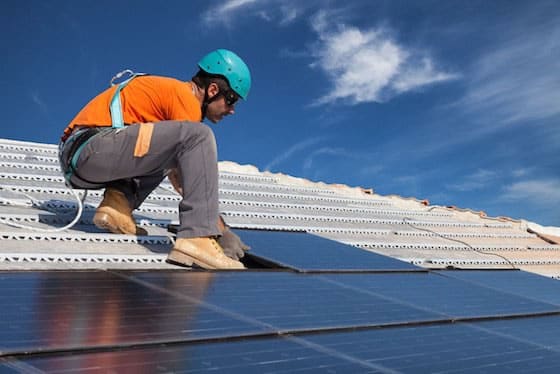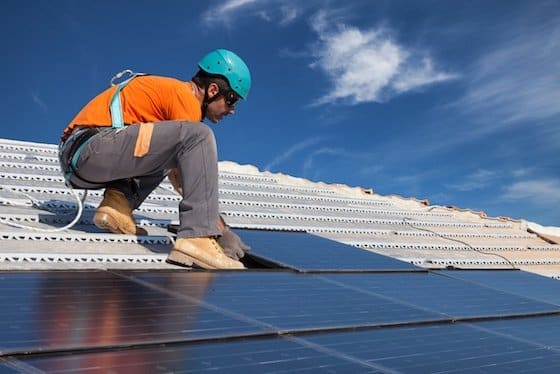6 Ways Facilities Managers Can Support Sustainable Facilities

In 2007, then-President Bush signed The Energy Independence and Security Act of the United States (EISA) into law, instating new definitions of high-performance buildings. These definitions outlined requirements for environmentally-friendly commercial spaces, which include:
- Decreased water, energy and material use
- Reduced negative impact on the environment
- Increased recycling
- Consideration of the buildings’ effects on human health
The act gave businesses a starting point for how to make their more sustainable facilities. Now, just a few years down the road, improving sustainability is more important than ever. As a facilities manager, you have the power to implement green processes at your locations to reduce negative impacts on the environment.
Improving the sustainability of your facilities can seem like a daunting task. Use these six methods to get started:
1. Conduct Sustainability Analytics
Gaining visibility into your facilities’ performance is key to understanding your current sustainability status. Once you know how you’re doing at present, you can develop strategies for future improvement.
Conduct an audit to see where your facilities are wasting energy— is there a particular piece of equipment that is using it inefficiently? Is there a certain season during which your energy usage skyrockets unnecessarily? Does your usage correlate to occupancy patterns? With data in hand around these types of queries, you can make data-backed repair, maintenance and replacement decisions that will make your facilities greener.
It’s important to keep in mind that if your facilities use any regulated technologies or substances such as refrigerant, you need to monitor their statuses frequently, as well as perform regular analytics around usage levels. This way, you can ensure you are always meeting sustainability and safety regulations.
2. Update Assets to Boost Energy-Efficiency
In older buildings, many assets were not designed and installed with carbon footprints in mind, since it was only recently that the general public became more aware of and concerned by environmental-friendliness. Thus, older assets tend to be fairly un-green because of a number of factors, like what materials they’re made of and how much energy they use.

Updating your facilities’ assets not only improves sustainability but also boosts efficiency and lowers costs. Key initiatives include:
- Replace your legacy boilers, HVAC units and windows for dramatic energy savings
- Use modern insulation to reduce energy loss
- Upgrade lights with sunlight and motion sensors
- Consider renewable energy sources like solar or geothermal
- Install new roofing for optimal heat trapping. Also consider a cool roof or green roof
- Mount meters— especially smart meters and submeters— for electric, gas, water and other utilities
For businesses that use additional types of equipment, like freezers in restaurant kitchens or medical technology in healthcare clinics, updating these assets to energy-efficient versions can also help create more sustainable facilities.
3. Use Eco-Friendly Cleaning Supplies
Keeping facilities clean and in good condition is one of your key responsibilities. Unfortunately, most traditional cleaning products contain hazardous ingredients that can not only negatively affect how green your facilities management operations are, but put your employees, customers and contractors in danger.
Using eco-friendly cleaning products reduces the amount of toxic chemicals your facilities release into the environment and lessens exposure for everyone in and around your facilities. Look for cleaning products that do not contain alkylphenol ethoxylates, phosphorus, nitrogen or other volatile organic compounds (VOC) to boost your overall sustainability.
4. Perform Preventive Maintenance
Preventive maintenance, or work you do regularly for upkeep purposes, helps keep your equipment functioning at its best. When equipment is not performing optimally, oftentimes this affects sustainability, especially if it’s older.
Regular maintenance on older pieces of equipment keeps their energy-usage down over time. Additionally, preventive maintenance helps extend equipment lifespans, reducing the material usage in replacement pieces.
5. Implement Recycling Practices
Recycling is a key way to improve the sustainability of your facilities; it conserves finite resources, saves fossil fuel energy, prevents waste from going into oceans and reduces CO2 emissions. Making recycling a priority requires planning, as there are regulations around recycling different types of materials, such as:
- Fluorescent Lights: Since fluorescent tubes contain mercury, they need to be recycled separately than other types of lights. Typically, you will need to return fluorescent tubes to the manufacturers for safe recycling, or utilize a specialized contractor.
- Batteries: Like fluorescent lights, batteries also contain toxic materials and cannot be put into a landfill. To recycle them properly, employ a certified servicer.
- Large Pieces of Equipment: Oversized equipment requires a hauler to remove and recycle properly. Be sure to give haulers specs of the pieces you need recycled so they can arrive with the necessary tools.
- Refrigerant: Refrigerant, used in appliances like refrigerators, freezers and air conditioners, contain chlorofluorocarbons (CFCs) and, due to the Clean Air Act, cannot be released into the atmosphere. Work with a certified specialist to monitor refrigerant levels and dispose of it safely.
Another way to increase recycling practices in your facilities is to save and reuse demolition debris if you are conducting construction projects. Not only does this minimize waste sent to landfills, but it is a great way to reduce materials spent.
6. Employ Green-Focused Contractors
When your facilities need repair and maintenance, utilize contractors who use clean products and energy-efficient tools. You also want to ensure the contractors you hire are experienced with the types of low-energy equipment and other assets your facilities have.
A contractor directory with detailed descriptions of service providers’ expertise, certifications, values and differentiators can be extremely helpful when hiring green contractors. By giving your business to contractors who aid in sustainability efforts, you show your support and extend your commitment to helping the environment and sustainable facilities.
Final Thoughts
Not only does creating greener facilities improve your business’s carbon footprint, but it also helps bring in revenue. Sustainability-focused consumers is a rapidly growing market; in fact, a Nielsen report found that, globally, 73% of millennial consumers— a major consumer group— are willing to spend more on products and services if they come from sustainable brands.
Additionally, keep in mind that 81% of millennials expect companies to make public declarations of corporate citizenship. Clearly, sustainability is a key factor in how new generations choose where to give their business. Appeal to consumers by showing them you care about the environment through sustainable facilities management, and reap both environmental and financial rewards.
Ready to take your sustainability into the future? Learn how to make your operations energy efficient, compliant, and environmentally friendly with a free demo.




